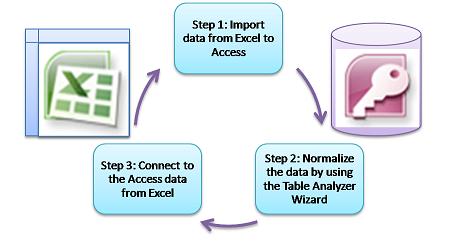


Click the ID column heading so that it is highlighted (if it is not already). This is where we are able to specify information about each of the fields we are importing - information such as DATA TYPE, INDEX, and FIELD NAME.

Alternatively you could actually open the table. Click the name of the table in the NAVIGATION PANE so that it is highlighted in orange.Open the database containing the table to be exported.
HOW TO CONVERT MICROSOFT ACCESS TO EXCEL DOWNLOAD
We shall be using the Access database from my last blog post which you can download from here. This is a procedure you might go through to export an Access Query or Table to Excel in order to perform further analysis. Let's begin by going through the procedure of Exporting Access data to Excel. NB you can also partially link an Access Database to an Excel spreadsheet, but the connection in this case in not completely live - you cannot change data from within the Access Database (which is then reflected in Excel), although data changed within Excel is reflected within Access - in other words, the connection is read-only. In this blog post we are specifically going to be looking at Exporting and Importing snapshot data to and from Microsoft Excel. Any changes made in Access is reflected in the external application , and any changes made in the external application is reflected in Access. This is in contrast to the option we covered in the last blog post on Linking Access to an External Data Source, where the connection made is 'live'. The same principle applies when you export data to an external application - any changes you subsequently make in Access is not reflected in your exported data. In the case of Importing, once data has entered your Access application from an external data source, any changes made to the original data source, are not reflected in your imported data. The data you are working with, in this case, is a snapshot. The difference between Import and Export is simple: you are either importing data into Access, or exporting data out of Access. When you work with any sort of external data in relation to Microsoft Access, you have three options.


 0 kommentar(er)
0 kommentar(er)
